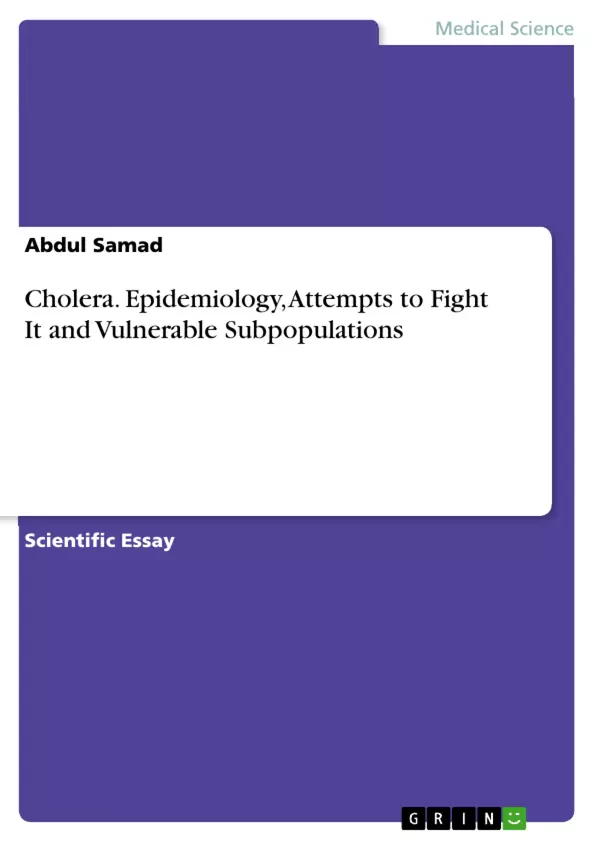Cholera is described as a "forgotten disease" that primarily affects "forgotten people" around the world. This paper tries to give a quick overview over the history of its discovery, its epidemiology and the efforts undertaken to fight it.
Inhaltsverzeichnis (Table of Contents)
- BRIEF DESCRIPTION OF CHOLERA
- EPIDEMIOLOGY OF CHOLERA
- ATTEMPTS/ EFFORTS MADE TO RESOLVE CHOLERA
- VULNERABLE SUBPOPULATIONS
- RECOMMENDATIONS
Zielsetzung und Themenschwerpunkte (Objectives and Key Themes)
This document aims to provide a comprehensive overview of cholera, a preventable and treatable disease causing significant morbidity and mortality, particularly in developing countries. The document focuses on describing the disease, its epidemiology, efforts made to resolve it, and the identification of vulnerable populations. It also includes recommendations for prevention and control.
- The epidemiology of cholera, including its prevalence, distribution, and risk factors.
- The impact of cholera on vulnerable populations.
- Various attempts and efforts made to address cholera outbreaks.
- Recommendations for the prevention and control of cholera.
- The role of sanitation, hygiene, and water safety in cholera prevention.
Zusammenfassung der Kapitel (Chapter Summaries)
- BRIEF DESCRIPTION OF CHOLERA: This chapter provides a comprehensive definition of cholera, highlighting its historical context and how it spreads. It explains the disease's cause, symptoms, and treatment options, emphasizing the importance of early intervention for survival.
- EPIDEMIOLOGY OF CHOLERA: This chapter delves into the global distribution of cholera, highlighting its prevalence in developing countries, particularly in regions with poor sanitation and hygiene. It explores factors influencing cholera transmission, including environmental factors, socioeconomic disparities, and population vulnerability.
- ATTEMPTS/ EFFORTS MADE TO RESOLVE CHOLERA: This chapter outlines various measures undertaken to combat cholera, emphasizing prevention, preparedness, response, and surveillance systems. It examines strategies implemented in Ghana to address the issue, including health worker training, improved sanitation, and access to clean water.
- VULNERABLE SUBPOPULATIONS: This chapter focuses on identifying populations at higher risk of cholera infection and severe outcomes. It discusses the impact of factors such as socioeconomic status, age, and underlying health conditions on cholera vulnerability, emphasizing the need for targeted interventions.
Schlüsselwörter (Keywords)
This document focuses on cholera, a significant public health issue, emphasizing its epidemiology, prevention, and control. Key terms and concepts explored include water contamination, sanitation, hygiene, vulnerable populations, cholera outbreaks, transmission pathways, and effective interventions.
- Quote paper
- Abdul Samad (Author), 2017, Cholera. Epidemiology, Attempts to Fight It and Vulnerable Subpopulations, Munich, GRIN Verlag, https://www.grin.com/document/1010654



